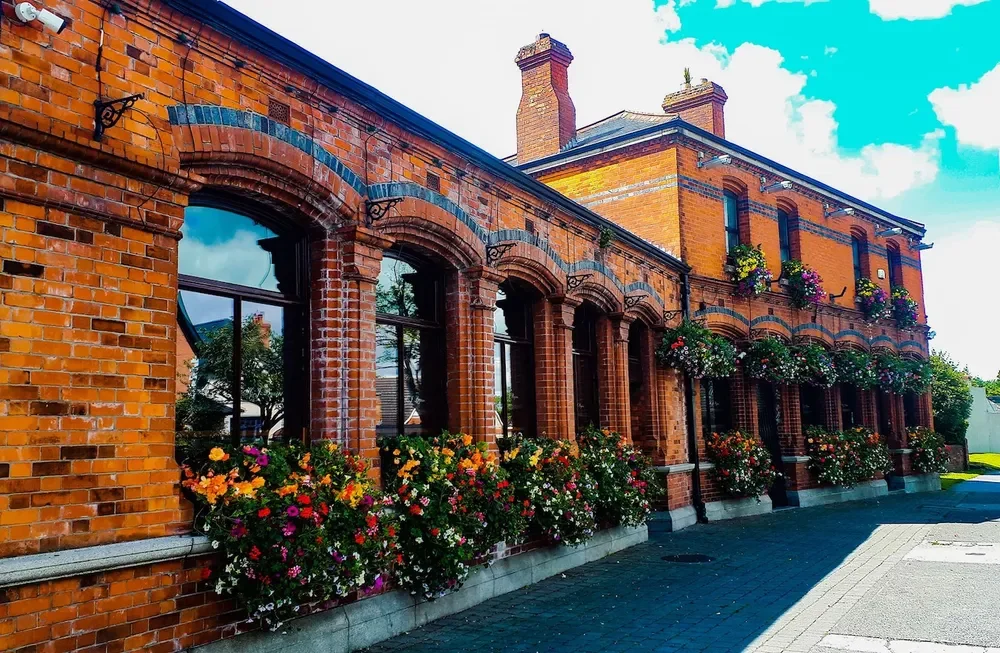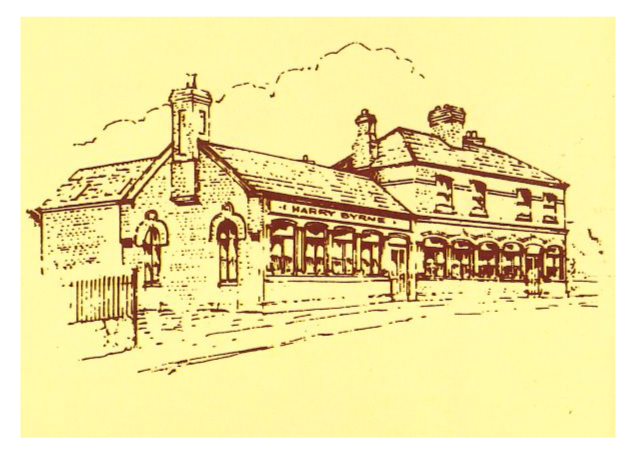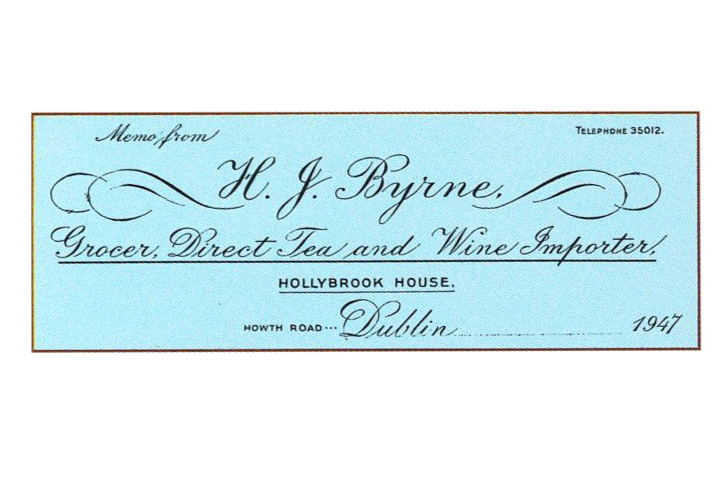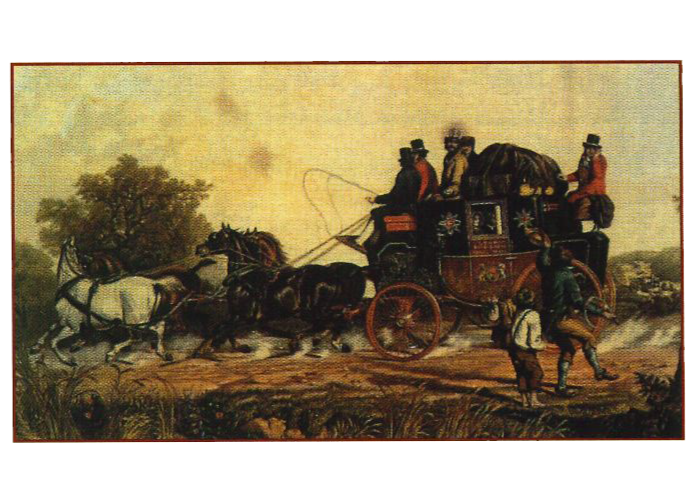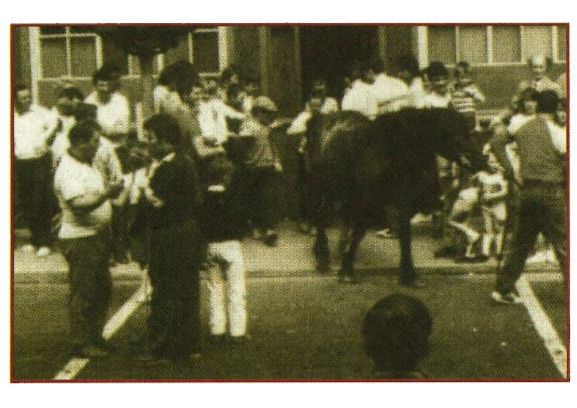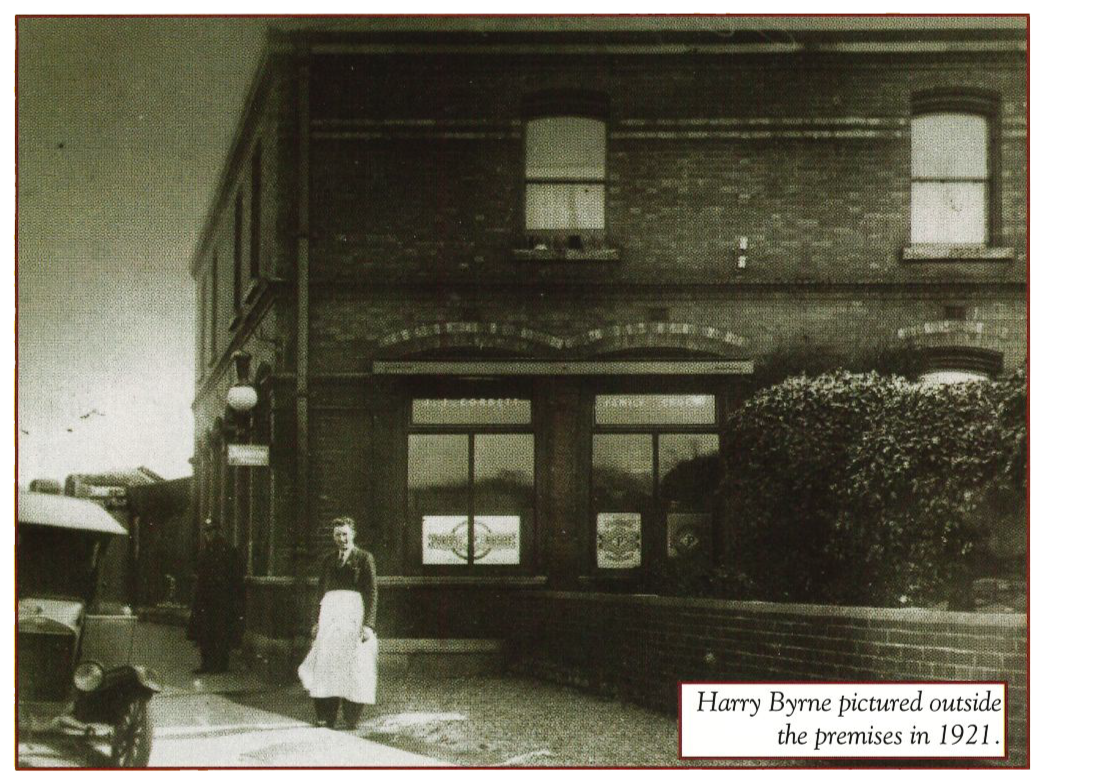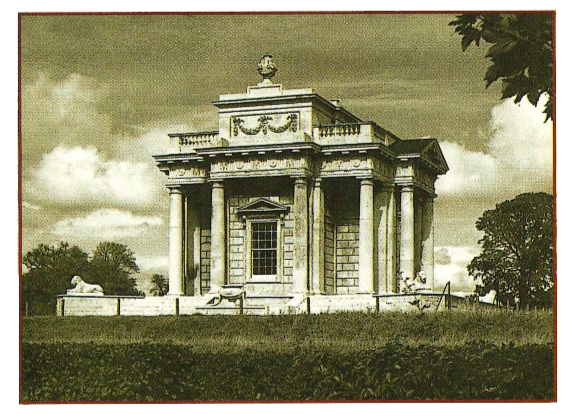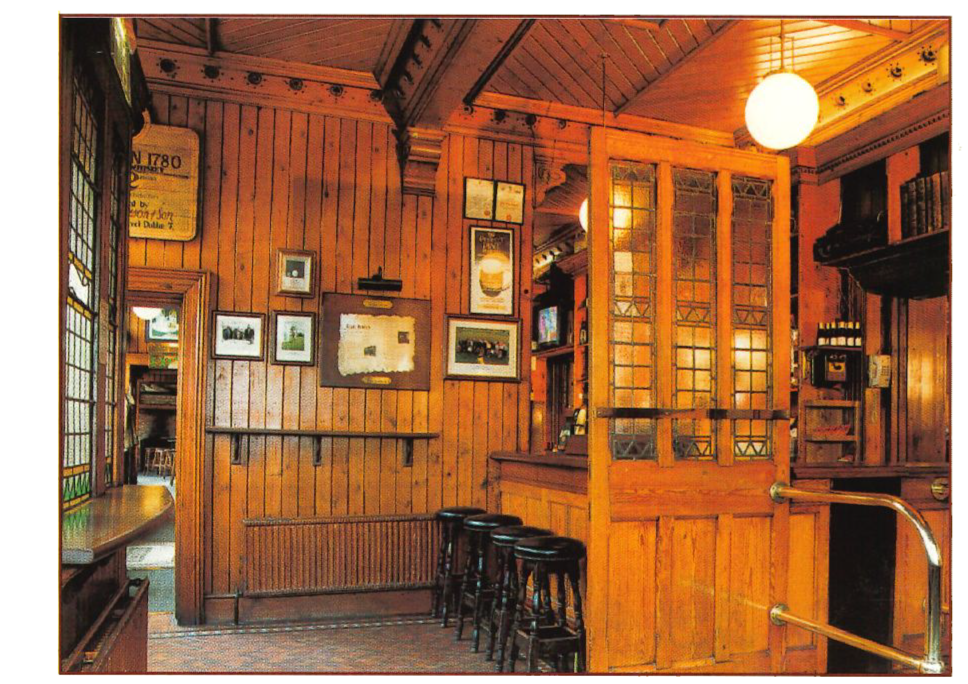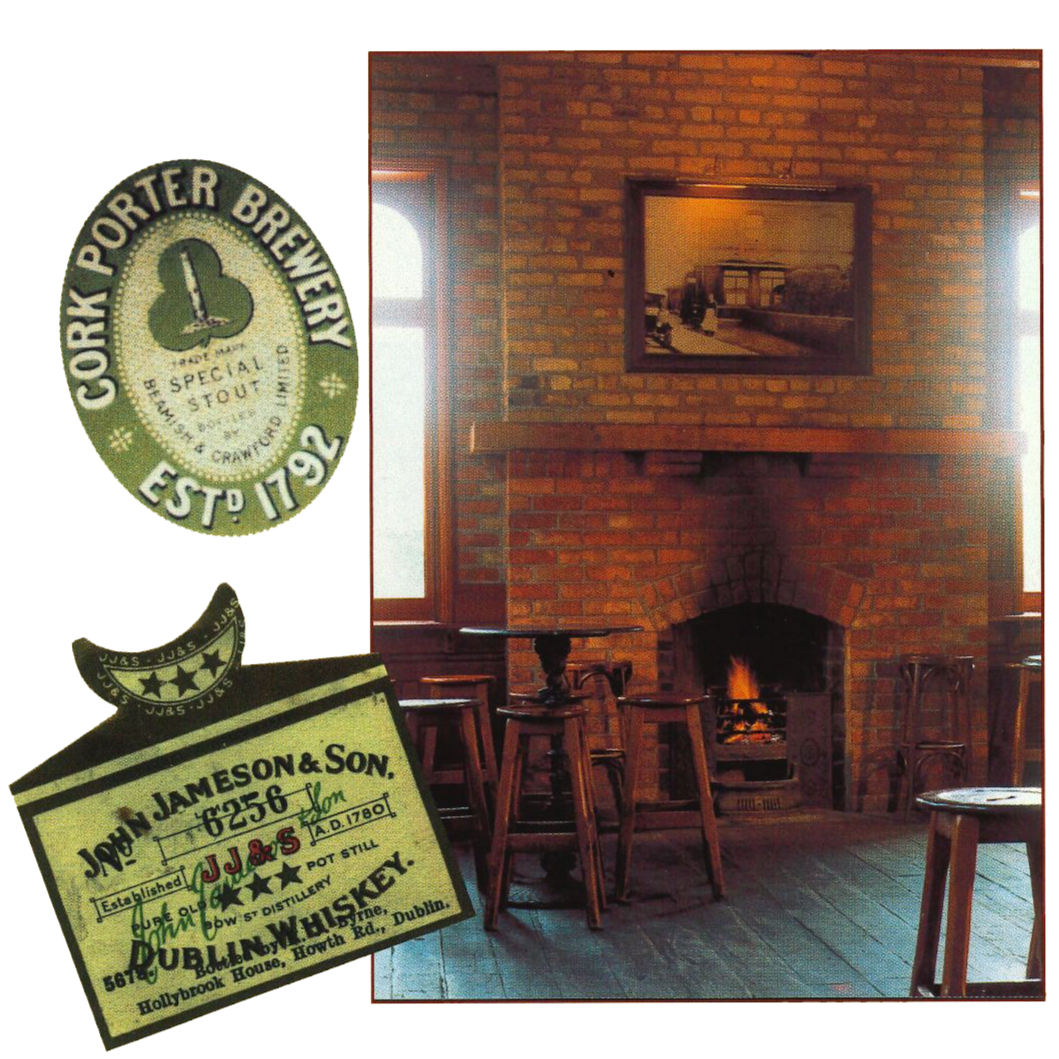Who we are
Nestled at 107 Howth Road, Harry Byrne’s Pub is a true gem of Clontarf, with origins dating back to 1798 when it opened as a coaching inn. The pub has remained in the Byrne family since 1947, when Harry Byrne acquired it—preserving traditions that span over two centuries. Today, run by the Byrne family, Harry’s remains a cherished part of the community.
With its beautiful red‑brick Victorian façade and heritage-rich interior of pitch pine, mosaic tiles, and snug wood‑panelled corners, the atmosphere evokes the warmth of Dublin's past . Whether you're settling beside the fire in a cosy nook or enjoying a sunny afternoon in the beer garden, Harry’s blends old‑world charm and convivial spirit with lively, modern touches—live sport on big screens, live music nights, and a broad selection of craft beers and whiskeys.
Regulars have known it as “the best smoking area in Dublin” and a place where conversation, community, and craic thrive in equal measure . It’s no surprise that the pub was named Local Pub of the Year in the 2019 Irish Pub Awards and featured in IrishCentral’s “Pub of the Month” series.
At Harry Byrne’s, you're not just getting a pint—you’re experiencing a Dublin institution, where the Byrne family hospitality makes everyone feel like one of the locals.

Celebrating 200 Years of Cultural Heritage
An Introduction
1798 - 1998
They say that a week is a long time in politics. Unfortunately the opposite appears to be the case in the Dublin licensed trade as a pub of 100 years standing is not generally considered a particularly old premises.
Perhaps this is because we have so many old premises or, perhaps it is that we do not properly appreciate the richness of culture and social history that is attached to our industry.
At Harry Byrne's we have always been conscious of our great heritage, and we are very proud of the fact that 1998 marks our bi-centenary. We are fortunate that we have able to trace our history back to its humble origins as a Coaching Inn in 1798. Along the way our industry has seen great innovations, and our country has witnessed great changes, many of which are intrinsically linked to the social evolution of the licensed trade through the continuous patronage of the Irish people.
Now, as in ages past, though perhaps not as important historically, the pub remains central to the Irish way of life. We at Harry Byrne's have a unique history and a unique heritage. We take comfort in the fact that we have always been faithful to the ethos of the traditional pub despite the obvious temptations, over the years, to modernise. To have done so would have been an act of cultural sabotage resulting in the desecration of a ‘Heritage' pub.
On a personal note this is also a time of family celebration as it is 50 years since my father. 1947 Harry Byrne, purchased the pub in 1947.
-Tom Byrne
Origins
This gem of antiquity, which is descended from an 18th century Coaching Inn, opened its doors to the Dublin public in 1798. The first licensee, David Hallisey, acquired this site as a consequence of the unsafe travelling conditions on the Howth Road,
'which enjoyed a notorious reputation for the four miles that it disappears from the shore at Clontarf until it reappears again beyond Raheny'.
The opening of Annesley Bridge at Fairview in 1797 gave an added importance to the North Coast bringing with it increased coach and merchant travel. Along the way they had to contend with Mud Island, a vile and despicable area between the present Ballybough Road and the North Strand, which was an infamous resort of smugglers, thieves and murderers. And if the traveller of the age survived this, he next came in contact with the 'Sloblands' the present Fairview Park which harboured all sorts of vagabonds, society cast offs, common thieves and miscreants, who thought little of relieving vulnerable passers-by of life and limb, not to mention his worldly goods. Further along the Howth Road in close proximity to the Black Quarry and the Hollybrook River, our 18th century coach traveller encountered the more professional highwayman - normally on horseback who excelled in the art of robbery, but seldom killed or maimed his victim as such outrages brought swift recriminations from the authorities, the consequences of which impaired the smooth and efficient operations of the highwayman's profession.
These were the prevailing social and economic conditions which David Hallisey encountered when he acquired the first licence here in 1798.

The Early Inn
Little documentary or solid historical information is available to us of the social conditions of the early Coaching Inn. However, we know that the Inn had a solid perimeter fence and a large coachyard which has survived as part of the modern day car park.
The premises itself is thought to have been a modest two storey thatched dwelling which would have accommodated up to 10 - 12 travellers at any given time. The water supply of the Inn was provided by a deep natural well which is now a feature of the premises. The Inn would also have contained a blacksmith's forge and livery stables where the horses were tended and rested, or exchanged for the next stage of the journey.
In those days the Inn was rarely if ever frequented by local inhabitants, and would have relied solely for its existence on the business of coach travel. The beverages consumed at the Inns of this era were invariably home brewed Ales, Brandy, Port and Wine.
The English Mail - 1809
n 1809 Howth was constituted as the Mail Packet Station, an event which brought increased activity and commerce to this area. This Inn along with another Inn in Raheny Village were designated as mail despatch depots on the route to the City of Dublin.
Each day the Royal Mail Carriage would stop here to collect and deliver the mail for this hinterland. This gave the Inn a status of increased importance among the Ascendancy classes - but it was of short duration as faster roads, better communications and a decrease in criminal activities dictated that the Inns were no longer necessary as mail despatch depots along the route.

The Lean Years and the Arrival of the Carolan Family
From this point onwards the role of the Inn went into swift decline leaving several gaps in the licensing records. The 1835 Commission into the operations of the licensed trade in Ireland made a scathing attack on how some premises, including this one, were run, describing them as being highly injurious to the morality of the lower orders'.
About this time, a prominent local farming family the Carolans, acquired the premises and began the task of adapting the old Inn to the constraints of a new age that was tempered by stricter licensing laws and the emergence of the great National Temperance Campaign of Fr. Theobald Mathew.
By 1861 Thomas Carolan was running a small pub and grocery business here in addition to the local family farm. By 1874 his son Patrick had taken the reins as by now the family had acquired two other pubs in the area - the present day Yacht in Clontarf and a premises in Fairview which is now defunct. At this time the premises acquired a 6am opening licence to accommodate farmers, market gardeners and cattle drovers en route to the Dublin markets
The Day of the Orover
Harry Byrne's enjoyed a great association, spanning 50 years, with the cattle droving fraternity. On Market or Fair mornings the drovers would assemble, sweating and wet outside the premises at 6am.
Their favourite drink was a mixture of hot coffee, treacle and whiskey. This cocktail was always prepared the night before, merely leaving hot water to be added in the mornings. However, there was strict adherence to who was entitled to be served, as only cattle drovers. or buyers, or people in some way connected with the fair were accommodated.
In later years, Matt Talbot, who was subsequently beatified by the Church, had an intrinsic relationship with the premises. Each morning he tended the horses outside and later spent the proceeds of his labours on the fruits of the barley.
From Carolan to James J. Corbett
In 1906 Laurence Carolan sold this premises to James J. Corbett and his benefactor, Joseph Deneefe, who lived on the premises.
The previous year they had demolished the entire premises and began a rebuilding programme which was not completed until 1907. That renovation is essentially what you see before you today - unspoilt and untainted for almost one hundred years.

The Arrival of Harry Byrne
In the Spring of 1920 a young man from Birr, Co. Offaly arrived in Dublin to serve his apprenticeship to James J. Corbett. His name was Harry Byrne.
When the young Harry arrived here, Clontarf was a quiet, sparsely populated suburb of the City of Dublin. Under the vigilant and inspirational eye of James Corbett, he quickly learned the rudiments of the Dublin trade. During these years JO the infant Irish State STU only sensational experience occurred when the premises was one morning subjected to armed robbery.
Later, following the custom of the trade, he moved on to gain further experience in another pub, scarcely realising that he would ever return to Clontarf. But in 1947 he did just that, returning to buy this premises at the then astronomical price of £22,000-
a development which sent ripples and shudders through the conventional Dublin trade.
And so the citizens of Dublin have over the Past 50 years come to pay homage to this great heritage pub that bears the name of Harry Byrne.
Harry remained in the family business until the 1970s, earning the reputation of a strict, austere yet compassionate publican who always cared for the welfare of his customers. So much so that he sometimes sent customers home even his best customers if he considered that they had exceeded their quota.

Famous Neighbours
Over the past 200 years this veritable shrine of antiquity has had more than its share of famous neighbours.
Lord Charlemont, Marino Casino and Ffolliot The Builder.
In its infancy this premises would have been visible to Lord Charlemont of Marino House, who in 1776 had commissioned Sir William Chambers to design Marino Casino as a perpetual memorial to his love of all things Italian, where he had enjoyed such memorable years as a young boy: Some years later, a builder named Ffolliot, who after a dispute with Lord Charlemont, decided to erect the present Marino Crescent on a site that would obstruct his Lordship's view of Dublin Bay.
Charlemont was outraged and reacted by increasing the toll charges on his turnpike gate in Fairview attempting to severely penalise Ffolliot for his audacious behaviour, as all his building materials would have to pass through this gate. But the wily Ffolliot proved that he was master once again, he avoided all toll dues by floating his goods across by barge from East Wall Road.
Bram Stoker and William Carleton
The novelists William Carleton and Bram Stoker were born at nos 3 & 15 Marino Crescent respectively. Stoker came to fame in later years as the creator of Dracula. Both would have been very familiar with Harry Byrne's, as was the famous Irish writer Oscar Wilde.

An Imbiber’s Tour
From the exterior Harry Byrne's is a most 'unpublike edifice, appearing more like an affluent red bricked Victorian dwelling of the last century But on entering the premises you are greeted by a living museum of culture.
Nothing has changed, except the light fittings, in almost 100 years. Standing out before your eyes is an interior of yellow Pitch pine, which is perfected by sumptuously carved high Victorian ceilings - the hallmark of the Victorian era.
A number of pitch pine partitions segregate this old pub, adding an atmosphere of comfort, privacy and charm. A mixture of mosaic tiles and original wooden floors add a dimension to the premises that exudes genuine traditional values. You will find nothing artificial or dated in this pub - everything before your eyes has been around for 100 years
The Snug Bar
Sauntering down the narrow corridor, you next enter the Snug Bar, a name which on visual contact appears quite misleading for this large haven of austerity. This is again a bar that exudes solid Victorian values, except in this case, the Snug Bar is the product of Tom Byrne's restoration project of 1993-4. But you will find nothing of neo- Victorian substance here.
All the materials used are 100 years or older. On the walls you can survey the original plans for the Clontarf and Hill of Howth Tramway, which were published in 1898. And the beautiful back bar could once be seen in a retail shop in Gloucester.

The Courtyard
Leaving the snug behind us now we enter the Courtyard. which is one of the most popular and stylish beer gardens in Ireland. Stroll about at your leisure and survey the beautiful terra- cotta archways which will remind you of a distant wondrous age sadly now forgotten in the mists of time.
All the artefacts here are authentic, including the cast iron gutters and pavement slabs. Relax here and savour your favourite brew! Mine is a pint of Beamish.
The Corbett Bar
Rambling inside now to the Corbett Bar, you are confronted by an entity - again part of the restoration project - that has been an assiduously assembled with painstaking attention to detail.
This bar, which took over a year to complete has been constructed using all the same materials that were used in the original pub. Have a gander about and survey in detail the splendid craftsmanship! Look at the beautifully carved mahogany wood of the back bar, over 100 years old, and still wearing the patina of its years superbly.
The floorboards on which you walk were salvaged from a Napoleonic Barracks in Burgundy, having been first used nearly 200 years ago. And if you cast your eyes upwards, away from your pint of Beamish, you will see that the light defuser and dome are true Victorian artefacts - having been constructed in 1896. Yes, 200 years on, Harry Byrne's is a true showcase of antiquity - one of the genuine cultural jewels and heritage pubs of Dublin. Enjoy your pint of Beamish!

Meet Your Hosts
Tom and Phyl Byrne
Today, this great cultural landmark continues to prosper in the Byrne family. The premises is now run by Harry's son Tom, who pursued a career in Aer Lingus before taking on the mantle of the family pub.
Under Tom's stewardship, this old museum of antiquity has become one of the great pubs of the modern Dublin trade. This feat is due in no small manner to the fact that when other Dublin publicans were busy tearing down the interiors of their historic Victorian shrines - and effectively desecrating their cultural heritage - Tom remained steadfastly loyal to the concept of the traditional Irish pub.
Even in his restoration project of 1993-4, in which he created the back bar in the image of the existing pub, he offered no concessions to modernity by preserving the ethos of the traditional pub. Today, Harry Byrne's stands apart as one of the rare heritage jewels of Dublin's pub trade.
Harry Byrne’s Pub wishes to thank Beamish & Crawford plc, for their generous assistance in the publication of this brochure.
